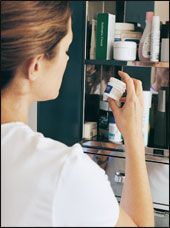Publication
Article
Pharmacy Times
Drug Diversion and Abuse: Corrections for Medicine Chest Problems
Author(s):
Prescription drug abuse often starts with the legitimate patient—pharmacists play a key role in educating these patients about safely using prescription drugs in their home.
John Burke, commander of the Warren County, Ohio, drug task force and retired commander of the Cincinnati Police Pharmaceutical Diversion Squad, is a 40-year veteran of law enforcement. Cmdr Burke also is the current president of the National Association of Drug Diversion Investigators. For information, he can be reached by e-mail at linkEmail('burke','choice.net');, via the Web site www.rxdiversion.com, or by phone at 513-336-0070.

Last month, we talked about the issue that a certain portion of the illicit prescription drug supply may very well be found in Americans' medicine chests. This may be especially true when you consider that it is consistently mentioned as a source for the youth of our country when it comes to prescription drug abuse. The medicine chest also can be a source for the drug-seeking worker or other persons who may enter your home as invited guests for one reason or another, who may be looking for either a quick way to get high or feed a prescription drug habit.
What can we do about it, now that we know what part of the problem is? I strongly believe that education is part of the solution. This education includes the continued education of our youth, of course, but I think it is time we all do a better job of educating the usual source of these drugs?legitimate patients. They are often the enablers, usually without even being aware that they may be supplying a curious teenager.
The first source of education seems logically to be at the prescriber's office. Patients receiving controlled substance prescriptions for the first time should be given a short indoctrination by the prescriber or staff on the possible problems with these drugs, preferably accompanied by a color brochure and a Web site reference for further consideration at home.

Of course, the other logical resource is at the pharmacy counter. The aforementioned color brochure prominently placed in a rack at the counter or slid into the pharmacy bag of a first-time controlled substance patient may reap prevention benefits when the patient gets home.
I would also be a big proponent of having these same attractive brochures at the police station. Police are always touting safety?it seems that keeping your medications safe and away from potential abusers is an important message that would make sense also coming from law enforcement.
The message would be that prescription medication is very safe when prescribed by your practitioner, dispensed by your pharmacist, and taken as directed. Your medication is for you and no one else, however, and sharing your medication is not only a criminal offense, but potentially can cause serious health consequences to the person who was not prescribed the medication.
Naturally, locking up these medications is the best solution, but if this is not possible, the medications should at least be stored in nonconventional locations in your residence. Individuals in your home who are searching for your medications will surely look first in your medicine chest, bathroom closet, bedroom dresser, and kitchen countertops and cabinets. Keeping your medications in these locations provides an open invitation to prescription drug diverters to compromise your pharmaceuticals.
Taking a periodic inventory of your on-hand medications that you no longer take is important in keeping these drugs purged from your home supply and unavailable for possible diversion. Properly destroying drugs that are either outdated or no longer needed may be the patient's best method.
We all need to ensure that the typical patient also is not enabling prescription drug abuse unknowingly, especially when the pharmaceutical abuse among our nation's youth continues to rise.







